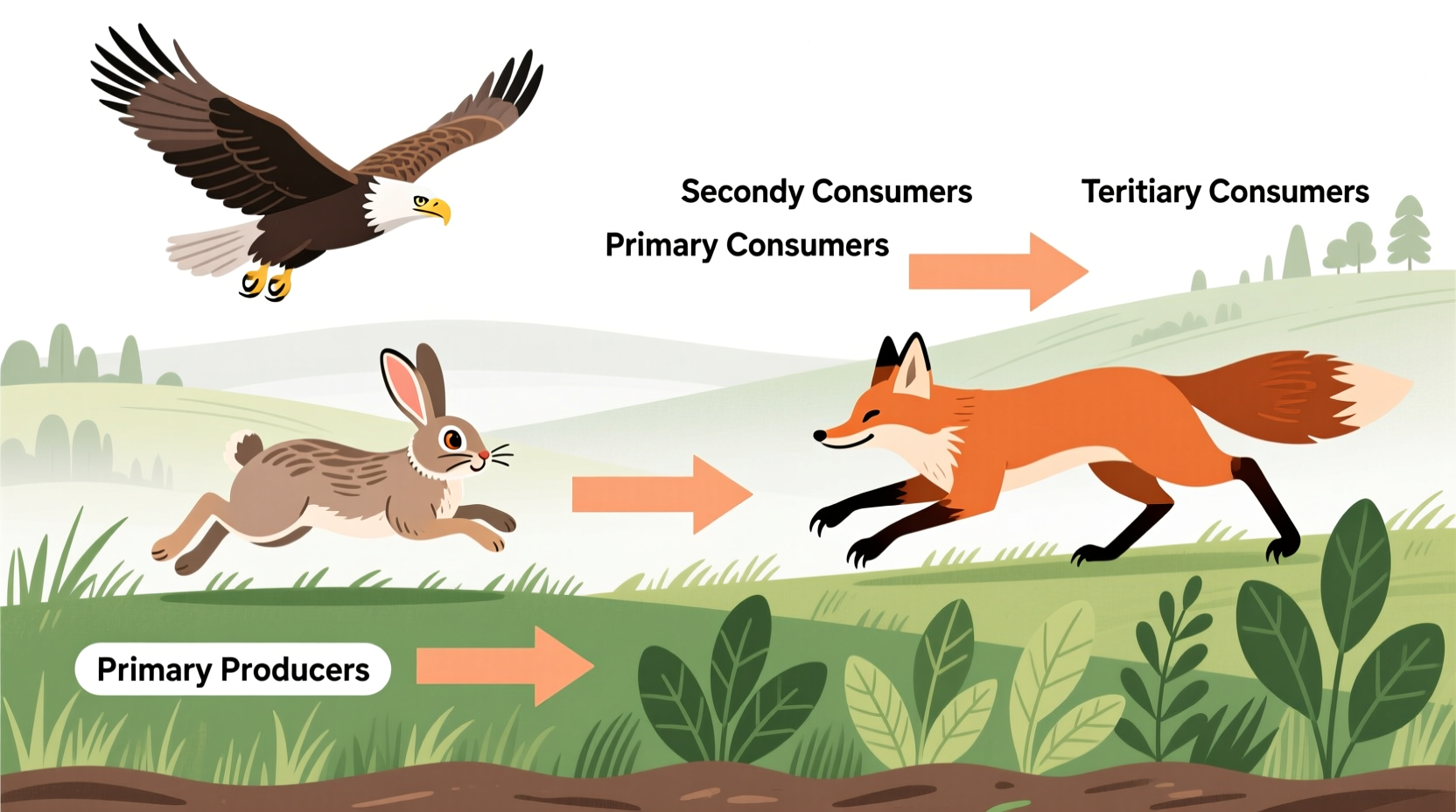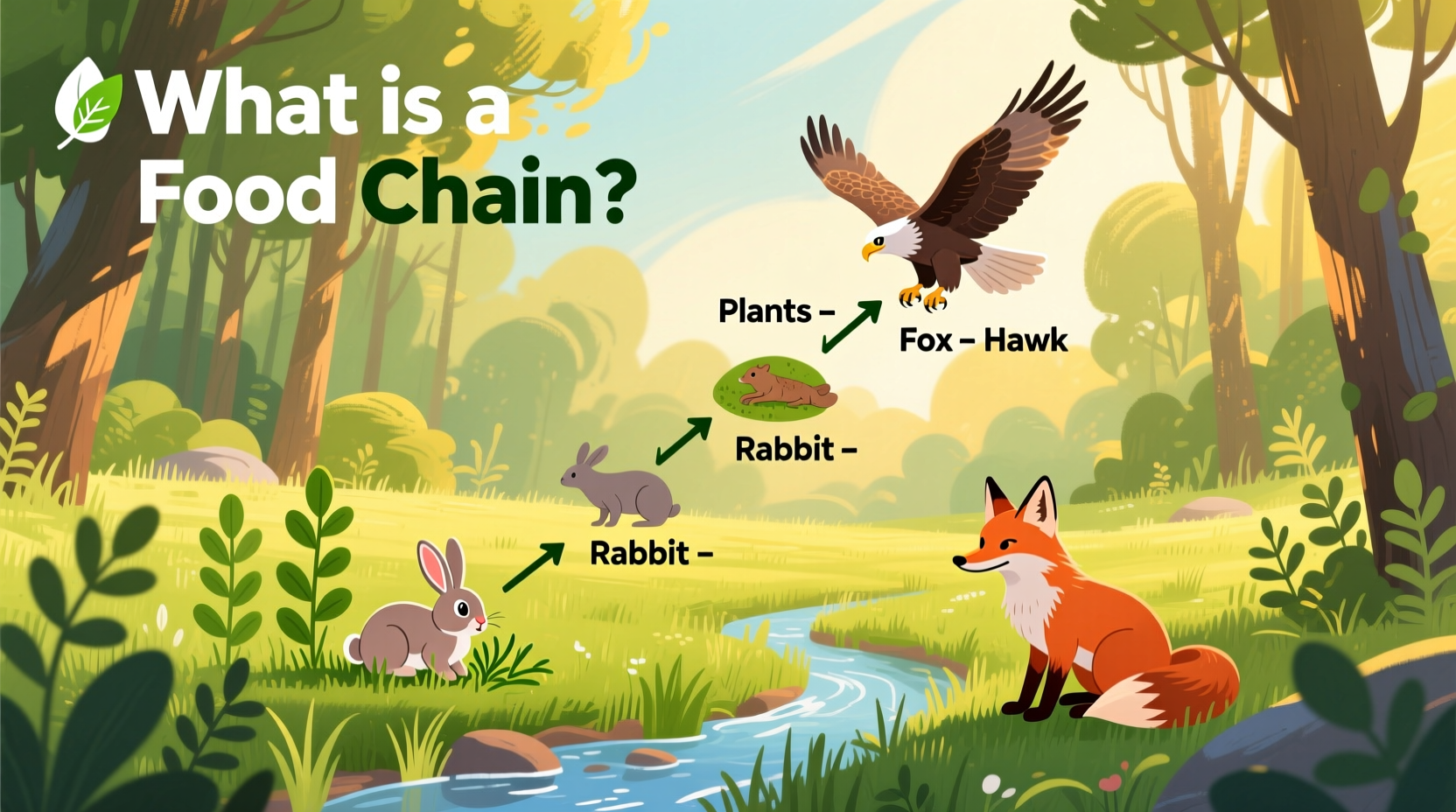Understanding the Basic Structure of Food Chains
At its core, a food chain represents the transfer of energy through different trophic levels in an ecosystem. This fundamental ecological concept illustrates who eats whom in nature's intricate network. When you ask what a food chain is, you're exploring how life sustains itself through interconnected relationships.
Every food chain begins with producers - typically plants and other autotrophs that convert sunlight into energy through photosynthesis. These form the foundation upon which all other life depends. Following producers come various levels of consumers, each representing organisms that obtain energy by consuming others. The sequence concludes with decomposers that break down dead matter, returning nutrients to the soil for producers to use again.

How Energy Flows Through Food Chains
One of the most critical aspects of understanding what a food chain is involves recognizing the 10% energy rule. When energy transfers from one trophic level to the next, approximately 90% is lost primarily as heat through metabolic processes. This explains why food chains rarely extend beyond four or five levels - there simply isn't enough energy to sustain higher-level consumers.
Consider this marine food chain example:
- Phytoplankton (producer) → Zooplankton (primary consumer) → Small fish (secondary consumer) → Large fish (tertiary consumer) → Shark (apex predator)
At each step, the available energy decreases significantly. If phytoplankton capture 1,000 units of solar energy, zooplankton receive only about 100 units, small fish get 10 units, and large fish receive merely 1 unit. This energy limitation shapes ecosystem structure and biodiversity.
Food Chain Components Explained
Breaking down what a food chain is requires examining each component's role:
Producers (Autotrophs)
These organisms form the base of every food chain. Plants, algae, and certain bacteria create their own food through photosynthesis or chemosynthesis. Without producers converting inorganic materials into organic compounds, no other life could exist.
Primary Consumers (Herbivores)
Organisms that eat producers directly. Examples include rabbits, deer, and zooplankton. These first-level consumers transform plant energy into animal tissue.
Secondary Consumers (Carnivores)
Animals that eat primary consumers. Examples include frogs eating insects or small fish consuming zooplankton. These second-level consumers obtain energy indirectly from producers.
Tertiary Consumers (Top Carnivores)
Predators that consume secondary consumers. Examples include hawks eating snakes or large fish consuming smaller fish. These occupy the higher trophic levels.
Decomposers
Often overlooked but essential, decomposers like fungi and bacteria break down dead organisms and waste products, returning nutrients to the soil. According to National Geographic, decomposers process approximately 90% of organic matter in ecosystems, completing the nutrient cycle.
| Ecosystem Type | Example Food Chain | Unique Characteristics |
|---|---|---|
| Forest | Leaves → Caterpillar → Robin → Hawk | Multiple overlapping chains form complex food webs |
| Ocean | Phytoplankton → Krill → Penguin → Leopard Seal | Shorter chains due to energy limitations in water |
| Grassland | Grass → Grasshopper → Lizard → Snake → Eagle | High biodiversity creates numerous interconnected chains |
| Arctic | Algae → Krill → Fish → Seal → Polar Bear | Fewer species results in more linear, vulnerable chains |
Food Chains vs. Food Webs: Understanding the Difference
Many people confuse what a food chain is with what a food web represents. While a food chain shows a single, linear pathway of energy flow, a food web illustrates the complex network of interconnected food chains within an ecosystem.
Real ecosystems operate as food webs rather than simple chains because most organisms consume and are consumed by multiple species. For instance, a mouse might eat both seeds and insects while being eaten by owls, snakes, and foxes. This complexity provides ecosystem resilience - if one food source disappears, organisms can often switch to alternatives.
Why Food Chains Matter: Ecological Significance
Understanding what a food chain is reveals critical insights about ecosystem health and stability. When one link in a food chain is disrupted, the effects ripple through the entire system. The famous Yellowstone National Park case study demonstrates this perfectly.
After wolves were reintroduced to Yellowstone in 1995 following a 70-year absence, scientists observed dramatic changes throughout the ecosystem. With wolves controlling elk populations, vegetation recovered along riverbanks, which stabilized soil and changed water flow patterns. This cascade of effects, known as a trophic cascade, illustrates how apex predators influence entire food chains and physical landscapes.
Human activities frequently disrupt food chains through:
- Habitat destruction eliminating key species
- Pollution affecting reproductive success
- Introducing invasive species that outcompete natives
- Overharvesting top predators
Common Misconceptions About Food Chains
Several misunderstandings persist about what a food chain is. Let's clarify these:
Misconception: Food chains represent complete ecosystem relationships.
Reality: Food chains are simplified models. Natural ecosystems function as interconnected food webs with multiple feeding relationships.
Misconception: Energy flows in a circle within food chains.
Reality: Energy flows linearly and is lost as heat at each transfer, while nutrients cycle through ecosystems.
Misconception: Longer food chains are better.
Reality: Most natural food chains have 3-5 trophic levels due to energy limitations, as confirmed by USGS ecosystem studies.
Practical Applications of Food Chain Knowledge
Understanding what a food chain is isn't just academic - it has real-world applications:
- Conservation efforts: Protecting keystone species maintains entire food chains
- Agricultural planning: Understanding pest-predator relationships reduces pesticide use
- Climate change research: Tracking how warming temperatures shift species relationships
- Education: Teaching children about ecosystem interdependence through local examples
Next time you're outdoors, try identifying a simple food chain in your local environment. Start with plants, find insects or animals that eat them, then look for predators of those organisms. This hands-on approach deepens your understanding of what a food chain is in practical terms.
Frequently Asked Questions
What is the simplest definition of a food chain?
A food chain is a linear sequence showing how energy and nutrients move from one organism to another in an ecosystem, beginning with producers and moving through various consumer levels to decomposers.
How many levels does a typical food chain have?
Most natural food chains contain 3-5 trophic levels. This limitation exists because only about 10% of energy transfers between levels, making longer chains unsustainable due to insufficient energy at higher levels.
Why are decomposers important in food chains?
Decomposers like fungi and bacteria break down dead organisms and waste products, returning essential nutrients to the soil. Without decomposers completing this cycle, nutrients would remain locked in dead matter, preventing producers from accessing them and collapsing the entire food chain.
How does a food chain differ from a food web?
A food chain shows a single, linear pathway of energy flow, while a food web illustrates the complex network of interconnected food chains within an ecosystem. Food webs better represent real-world ecosystems where most organisms have multiple food sources and predators.
Can humans be part of food chains?
Yes, humans occupy various positions in food chains depending on their diet. As omnivores, humans can function as primary consumers (eating plants), secondary consumers (eating herbivores), or tertiary consumers (eating carnivores). In some ecosystems, humans serve as apex predators with no natural predators of their own.











 浙公网安备
33010002000092号
浙公网安备
33010002000092号 浙B2-20120091-4
浙B2-20120091-4